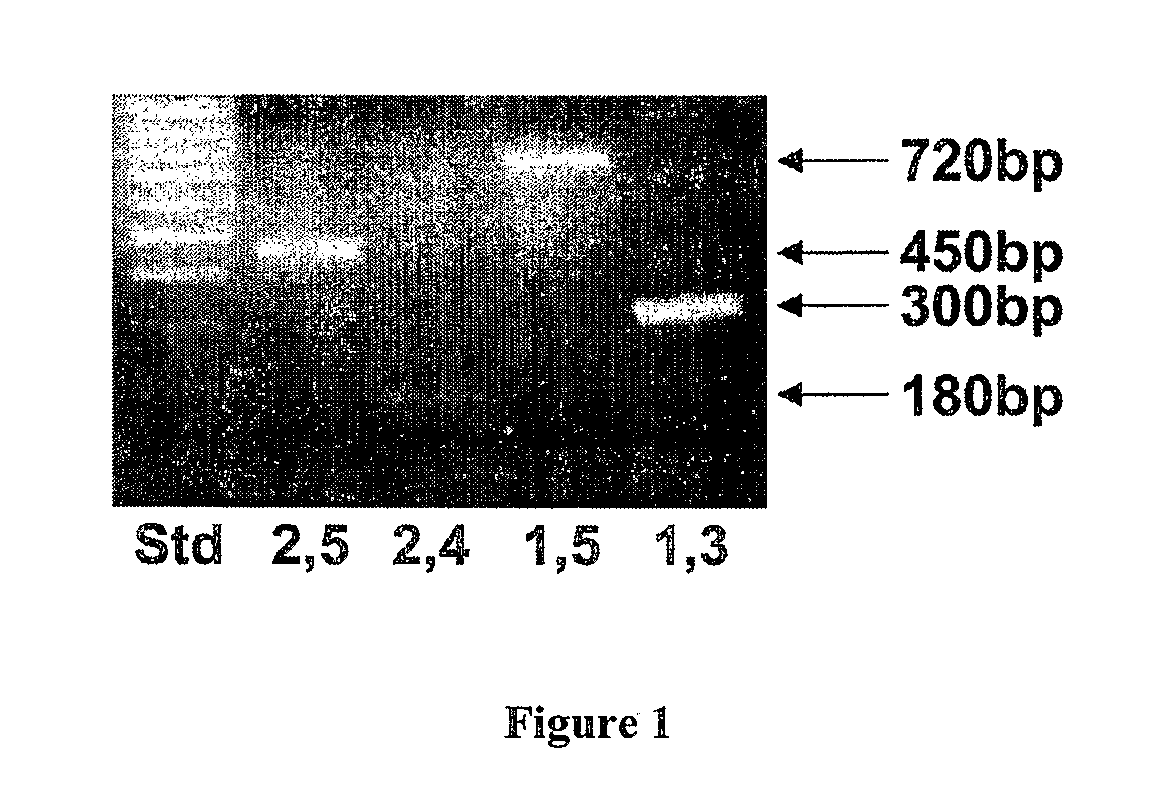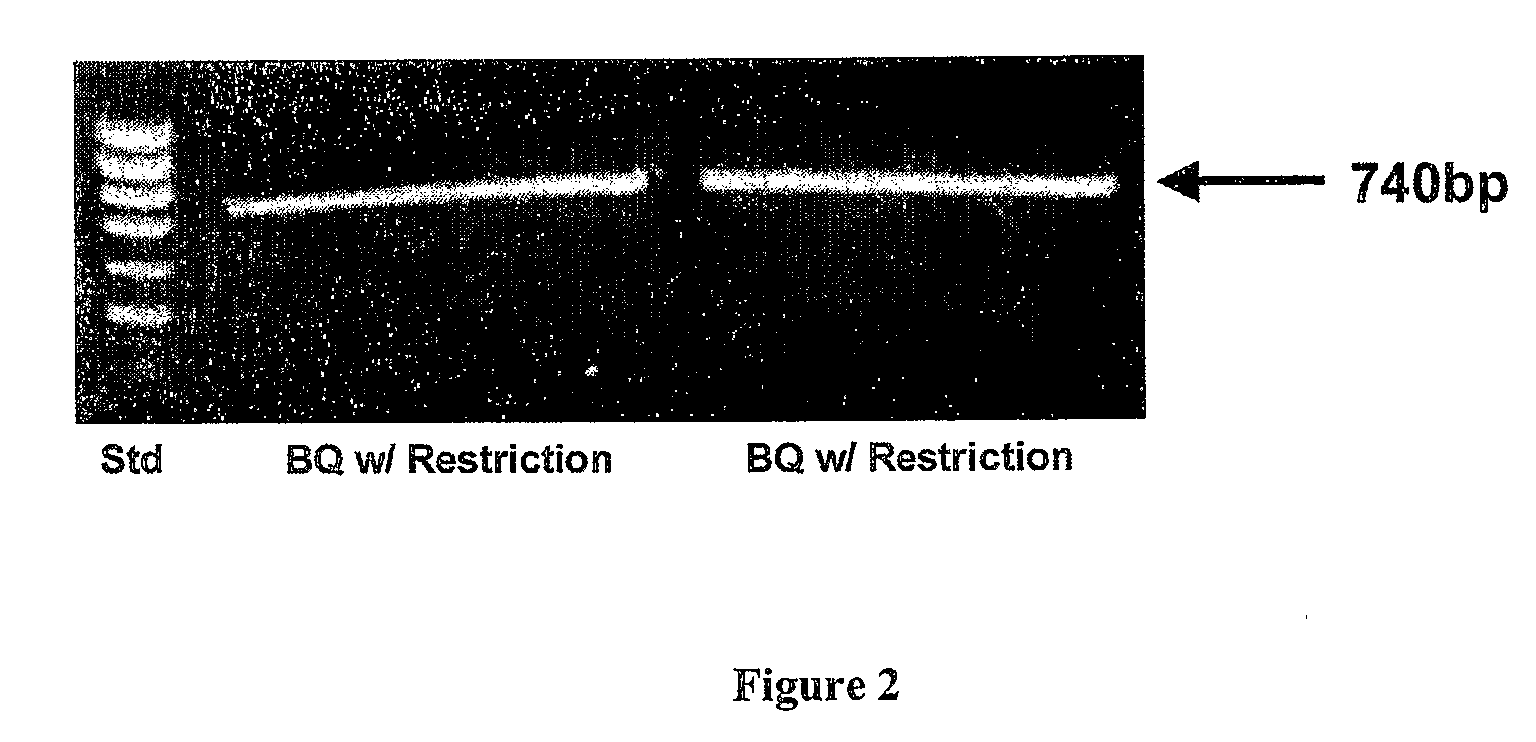Catecholamine regulated protein
a protein and catecholamine technology, applied in the field of new proteins, can solve the problems of decreased molecular chaperone synthesis, inefficiencies in ubiquitin-proteosomes, and deficiency in the anti-stress mechanism, and achieve the effect of increasing reducing the intracellular expression of crp40
- Summary
- Abstract
- Description
- Claims
- Application Information
AI Technical Summary
Benefits of technology
Problems solved by technology
Method used
Image
Examples
example 1
Characterization of Human CRP40
Methods and Materials
Generation of BQ224193 Primers Synthesized by MOBIX, McMaster University:
[0102]Human Brain RNA (Ambion) was reverse transcribed using MuLV Reverse Transcriptase (Applied Biosystems) and a fragment of 720 base pairs (Genbank #BQ224193) was amplified using 5′ atg gat tct tct gga ccc aag cat 3′ (Sense primer) and 5′ tcg ttc ctt ctt tgg ccg gtt ttt t 3′ (Antisense primer) designed by MOBIX, McMaster University. The conditions used were: 95° C., 2.25 minutes (min), 95° C.-15 sec, 60° C.-30-sec, 72° C.-55-sec, 40 cycles 72° C.-7.0-min. The PCR product was run on a 1% agarose gel with 1×TAE and 0.05% ethidium bromide (EtBr). The band at 720 relative to a 100 bp marker (Biorad) was cut out, purified using a Qiagen gel extraction kit, and sequenced.
Cloning BQ224193
[0103]Bam H1 and EcoR1 restriction enzyme sites were introduced 5′ of sense and antisense primers, respectively, to facilitate cloning. Subsequent RT-PCR and analysis of the produ...
example 2
Utility of CRP40 as Biomarker in Neurological Diseases
[0150]The present study was undertaken to examine human CRP40 expression in healthy control, schizophrenic and bipolar postmortem brain specimens. A similar study was conducted using primers directed to mortalin-2 and the results were similar.
Methods and Materials
Post-Mortem RNA PFC Sample
[0151]Post-mortem DNase-treated RNA specimens of the prefrontal cortex were provided by the Stanley Foundation Neuropathology Consortium. Microscopic examination was performed on all samples by 2 independent neuropathologists trained at the Stanley Foundation in order to provide consistent results. Extensive records of patients were available and were reviewed by two psychiatrists. Diagnoses were established using DSM-IV (Diagnostic and Statistical Manual of Mental Disorders, 4th Edition) criteria (demographics shown in Table 1) as follows. The control patients were confirmed to be free of psychiatric illness and free of substance abuse, and wer...
example # 3
EXAMPLE #3
Affect of Reduced CRP40 Expression
[0162]This experiment was conducted to determine whether or not reduced CRP40 in the prefrontal cortex is linked to the development of schizophrenia-like behavioural abnormalities or whether reduction in CRP40 in patients with schizophrenia is a consequence of the disease process.
[0163]To establish whether reduced expression of CRP40 in the medial prefrontal cortex leads to the development of behavioural abnormalities in a putative animal model, the following experimental approach was used.
[0164]Five groups of rats each consisting of 4 subgroups (n=12 / subgroup, totaling 240 rats) were implanted with bilateral 26-gauge stainless steel guide cannulae (Plastics One Cat#3280PD-2.0) above the prefrontal cortex (stereotaxic coordinates: 3.0 mm anterior to bregma, 0.7 mm lateral to midline and 2.5 mm below the surface of the skull). ADONS solutions were infused continuously for 3 weeks via S.C. implanted osmotic mini-pumps (Alzet model #2004) con...
PUM
| Property | Measurement | Unit |
|---|---|---|
| Fraction | aaaaa | aaaaa |
| Fraction | aaaaa | aaaaa |
| Time | aaaaa | aaaaa |
Abstract
Description
Claims
Application Information
 Login to View More
Login to View More - R&D
- Intellectual Property
- Life Sciences
- Materials
- Tech Scout
- Unparalleled Data Quality
- Higher Quality Content
- 60% Fewer Hallucinations
Browse by: Latest US Patents, China's latest patents, Technical Efficacy Thesaurus, Application Domain, Technology Topic, Popular Technical Reports.
© 2025 PatSnap. All rights reserved.Legal|Privacy policy|Modern Slavery Act Transparency Statement|Sitemap|About US| Contact US: help@patsnap.com



